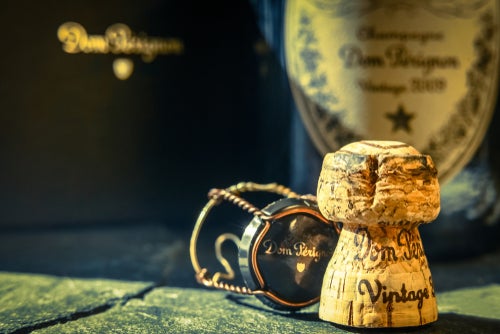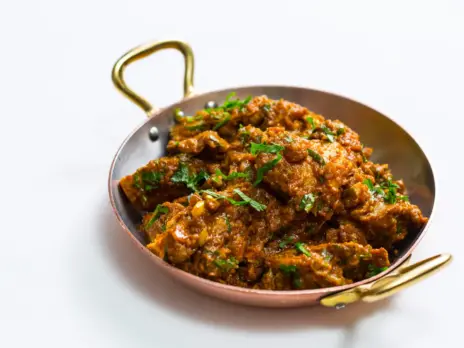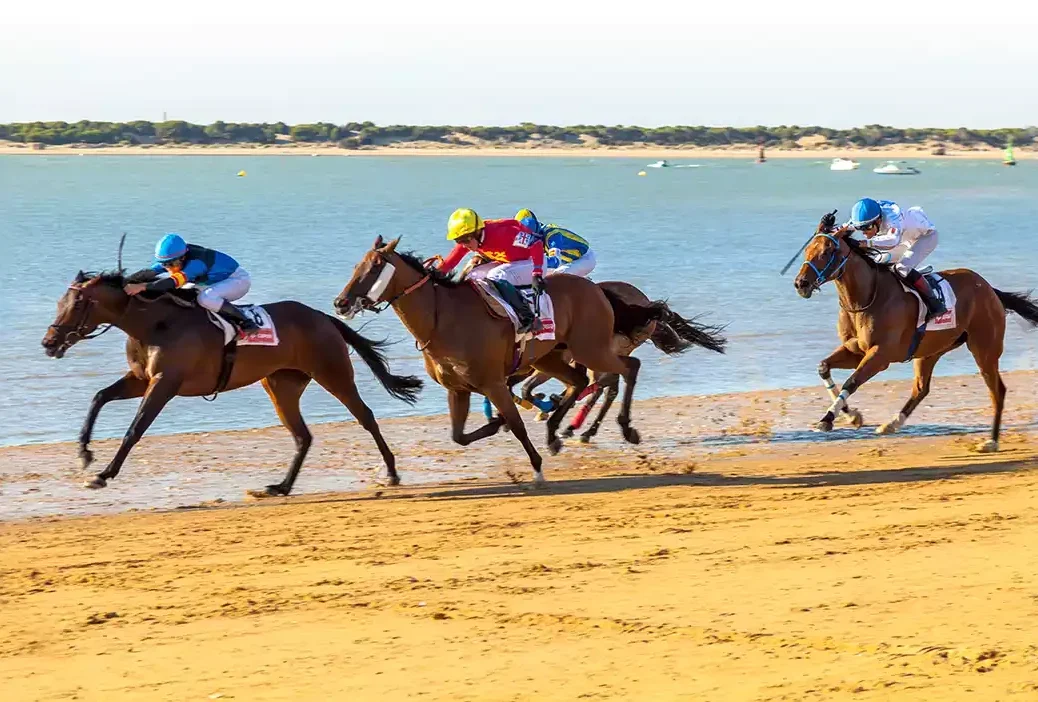
In a piece first published in WFW68 in 2020, Simon Field MW learns of a winemaking approach based on the twinned terroirs of vineyard and cellar when he visits Bodegas Hidalgo in Sanlúcar de Barrameda during the coastal town’s annual equestrian fiesta.
It is hard, ordinarily, to believe that Sanlúcar de Barrameda is one of the poorest towns in Spain. Especially hard during the annual Carreras de Cabellero, when, every August since 1845, the entire town has been galvanized by an equestrian fiesta on the beach—a hazy, sandy celebration of sufficient hedonistic potency to dispel, momentarily at least, anxieties of decline and unemployment. One of the caballeros has seen it all before; Javier Hidalgo cuts almost as dashing a figure in colorful silks as in his quotidian costume, a more than passable tweedy simulacrum of the English country gentleman. A sixth-generation scion of a famous family, the eponymous company now run by his nephew, Javier now competes in the seniors’ race, one of seven to unfurl along the beach on the shores of the Bay of Cádiz, the finishing line celebrating a dead heat with the sunset. Everyone is drinking Hidalgo’s famous Manzanilla La Gitana, some more than liberally, and Javier is fluently optimistic as the afternoon progresses and his race approaches.
Sanlúcar makes up the northerly tip of the Sherry Triangle, the larger town of Jerez farther inland, with El Puerto de Santa Maria at its southerly point. The dazzling albariza soils, limestone predominantly, are valued most of all in the strip between Jerez and Sanlúcar, known as Jerez Superior. Elsewhere there is clay (barro) and sand (arena), where grapes are cultivated for the more robust styles, Oloroso among them. The Palomino grape is now virtually omnipresent, with only 10 percent of Pedro Ximénez within the Triangle. (There is a derogation, seldom employed, to import some from adjacent Montilla-Moriles.) The bodegas in Sanlúcar used to run along the promenade; now wisps of land have been reclaimed from the estuary of the Guadalquivir river, and the new coastal road is dominated by restaurants, including La Casa Bigote. Where better to go for a plate of enormous gambas rochas with a glass or two of Manzanilla? Where, indeed—especially on race day!
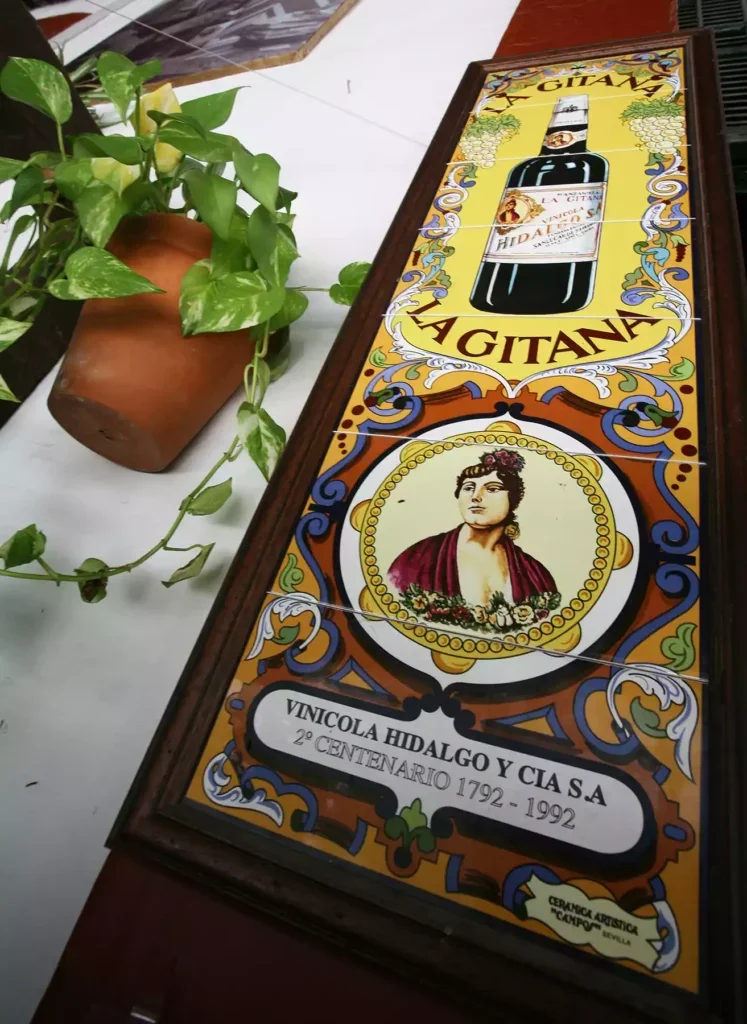
To the north of the town, cladding the estuary with lagoons and marshland, is the Doñana National Park, one of the largest nature reserves in Europe. We espy flamingos aplenty and much more besides—not the imperial eagle or the Iberian lynx this time, however. Fermín Hidalgo, our host, the prodigal son from the eighth generation, advises that they are both exceedingly rare. He shrugs and pours us another glass of Pastrana. In the early evening, the sun catches the glasses (catavinos, I should say) beautifully, and gold and diamond iridescence ensues. The humidity from the marshes, together with the sea breezes, provokes the unique microclimate that underwrites the fundamental difference between Manzanilla and Fino, such an important distinction that Sanlúcar lobbied for recognition on its own; success came in 1964, with autonomy for the DO Manzanilla Sanlúcar de Barrameda. Some neighbors in Jerez are a little annoyed that Sanlúcar is still allowed to produce Fino, too, albeit, of course, under the broader DO Jerez denomination. A small but significant victory for a town where most of the players are “boutique,” with Barbadillo the largest and Hidalgo, producing 600,000 bottles a year, next largest, which makes it the eighth-largest company in Sherry as a whole. Hidalgo does own all its vines, however, all 200ha (500 acres) of them, which is relatively rare. Other worthy names in Sanlúcar include La Guita, Delgado Zuleta, and Pedro Romero.
So, what of Sherry itself? Along with German Riesling it is the category that most often comes with the epithet “undervalued” freely attached. It was not ever thus, and for every Falstaffian quip and recollection of leathery dons, there is sure to have been a historical rather than natural impediment to progress, traced all the way back to the Moorish occupation in Andalusia. Every potential silver lining of influence—for example, the coalitions formed by the Peninsula War or the famous agreement with Harveys of Bristol—seems to have inspired an equal and opposite drawback; one only has to think of the long shadow cast by the Spanish Civil War (1936–39) or, more poetically, the Singeing of the King of Spain’s Beard (1587) to recognize a complex chronology.
Ultimately, of course, Sherry brought itself down, the rush to commercialization and sweetened mediocrity, as perpetrated by the likes of the corporate giant Rumasa in the 1970s, guilty of taking too much for granted and thereby ultimately undermining the product itself. From 26,000ha (64,250 acres) and 280 wineries in 1980—hardly extensive even then—there are now only 7,000ha (17,300 acres) farmed and a mere 86 wineries, most of which sell to the larger houses. The vicious circle of unpopularity and resulting overstock has proved hard to break.

Hidalgo: Inherent quality amid two terroirs
Hard, but not impossible. Hidalgo has worked diligently to recalibrate, buoyed by inherent quality, unadulterated and focused. Their old-vine plots are located mainly in the Jerez Superior communes of Miraflores and Balbaina Alta, the most famous of which is called El Cuadrado, which, at a vertiginous 400ft (120m) of altitude, is the highest vineyard in Jerez. Here is the genesis of a bivalve process that Fermín describes in terms of “two terroirs”; the first, naturally enough, referring to the vineyard, but the second terroir, equally important, located within the bodega itself—acknowledgment that, with Sherry more than anything else, it is the ambient environment of the winery above all that dictates the personality of the final product. The wisteria-covered headquarters in the central square is but one of several bodegas owned by Hidalgo, each subtly different, each imparting its own personality on the wine itself. The oldest, several backstreets later, is a veritable urban cathedral by the name of San Luis, which contains a solera that is nearly 200 years old, its high windows opened only to breathe in the salty westerly winds (the Poniente) with dry Levante easterlies turned away, its sandy floors regularly watered down to maintain an optimal humidity. Here the famous flor yeast covers the liquid all the year round, more so in spring and fall, the time when the unfiltered En Rama is drawn. The running of the scales continues apace, alchemical and defiant of time’s arrow. This bodega is 46ft (14m) high and is located 6ft (2m) below sea level. It is always calm.
Manzanilla is king in this part of Spain, representing 75 percent of Hidalgo sales, mostly under the La Gitana brand. Fermín reminds us that in greater Spain, 60 percent of all Sherry consumed is Manzanilla, with a further 20 percent Fino, so a completely different dynamic from the export markets, which have tended over time to favor blends and sweeter styles. Despite this focus, Hidalgo’s premium range also includes an Amontillado (Napoleon), a Cream (Alameda), and a PX (Triana); then there are VOR (20-year-old) and VORS (30-year-old) labels, many of them, it seems, bearing the adversarial nomenclature of Napoleon and Wellington—neutrality achieved at last… in all but taste, which dwells on the far side of complexity.
History abounds in the casa Hidalgo—from the marble courtyard, adorned somewhat incongruously with oriental bird cages, to the tiled antechambers, where one is lucky enough to taste the wines. Here, we are treated to the anecdote of the eponymous gypsy who all but seduced distant forebear, Eduardo, in 18th-century Málaga. An Andalusian femme fatale, Carmen avant la lettre, if one may delve lazily into the wrong language, Bizet notwithstanding. The winsome lady, for all that, stares out at us from half a million bottles, and her image is one of the most durable and evocative in the region. Fermín show us the whalebone venencia which may have been used to refresh the seduction. Today, the wine is drawn and poured with inherited panache, the venencia now made from bamboo for the visitors, or from stainless steel for everyone else. The essence of the ritual has not been lost, however.
Artistry, chemistry, geography
Nor, for that matter, has the supreme artistry at play. The first fermentation is more anonymous and clinical, free-run juice mainly for the Manzanilla, to be fermented in stainless steel at 68°F (20°C) or so; tartaric acid is added as a matter of course. Thereafter, the fortification, using local spirit of 96% ABV, to 15.5% ABV for the biological styles. The flor is encouraged to grow naturally in the sobretabla before the liquid progresses to the solera itself, measured to cover five sixths of the 600-liter butt, its flor nourished afterward with a pragmatism that can be underwritten only by decades of experience, its finer pathways marked on the barrels by chalky hieroglyphics and arrows. The artistry defers to the specificity of scientific process; the yeast (Saccharomyces cerevisiae) completes its anaerobic phase to catalyze the fermentation. Then a second, metabolic phase depends on both alcohol and oxygen to nourish the waxy layer of protection, with specific rates of evaporation in the butts ensuring a perfect equilibrium between water loss and alcohol absorption, thereby producing the distinctive chamomile flavors, characterized by the simultaneous production of significant levels of acetaldehyde. The chemistry is unnervingly precise, and the ambient environment is fundamental to the process—hence Fermín’s “two terroirs” and the significance of the on-site cooperage, where the used American barrels are treated with due deference.
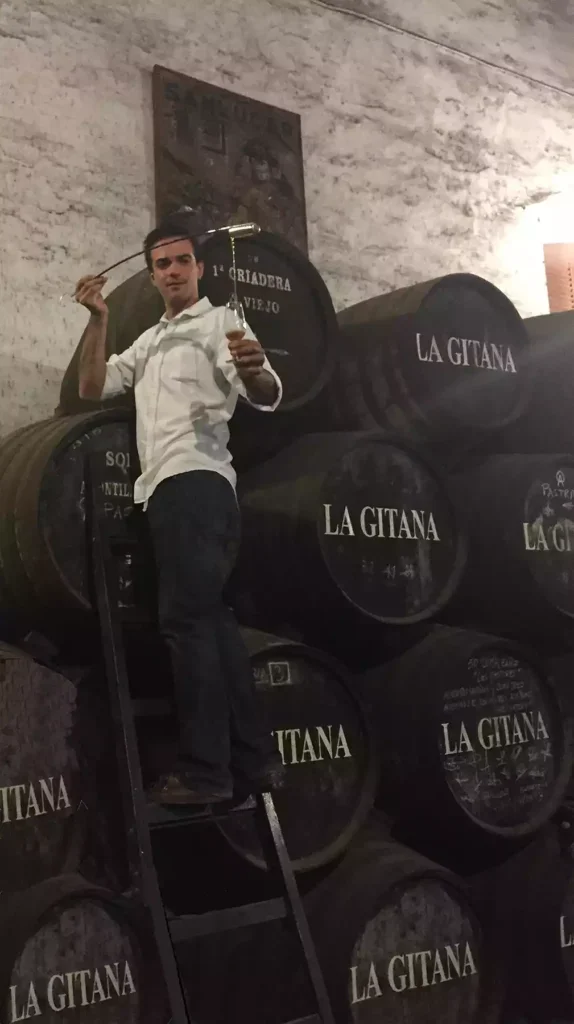
The Gitana enjoys six to seven years in the solera; for the En Rama it is usually eight years, the wine selected from 35 older casks. In 1997, Hidalgo introduced a single-vineyard wine from a specific coastal location, La Pastrana, which is aged for 12 years and imbued with the complexity befitting a Manzanilla Pasada. The rest of the range is labored in love, unexpected or at least unusual biological pathways opening up the possibilities of going down the Amontillado route, or even of fortifying to 17% ABV at an early stage to develop the mahogany richness of an Oloroso or—holy of holies—a Palo Cortado, the birthright of which is almost always veiled in secrecy. “An Amontillado that takes on the character of an Oloroso,” advises Fermín, adding, somewhat cryptically, “or vice versa.” Some secrets are best kept thus.
Circumstances well beyond the scope of the Levante and the Poniente mean that the horses will not race along the beach this year, and Javier will have to wait a while for his victory lap. Meanwhile, in the beautiful, gentle town of Sanlúcar, the Sherry will continue to fortify an otherwise precarious economy; a little more support would not go amiss and, as we all know, is long overdue. In 1900, when the fishermen raced the horses along the beaches to meet the trawlers, a barrel of Lafite from Bordeaux cost the same as a barrel of Sherry. It is by no means a slight to Château Lafite to suggest that the gap is now perhaps a little too wide.
Tasting
Hidalgo La Gitana En Rama
(Latest release, bottled spring 2020)
Soft gold with a little fade, dignified and composed. The nose recalls chamomile and late-season bloom, even if we stretch before the equinox; yeast and iodine, umami notes of jamón ibérico hanging in an adjacent room tempered by the spring jasmine that adorns this one. The salty sea breeze traverses them both. Then sour honey, the kernels of very white peaches, the faintest etch of woodsmoke, and then a clean yet resourceful peroration. | 91


